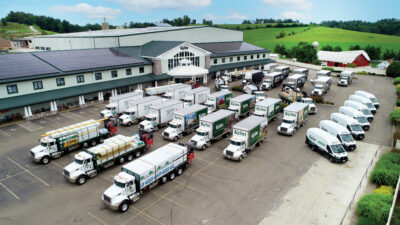
By Zach Miller
At the time of this writing, the North American Lumber market, relative to this time of year, can best be described as idle. That said, there appears to be some optimism that buying will begin to accelerate as spring nears and inventories will need to be built. Even with the current mild demand of most products, West Coast producers are dealing with obstacles such as log supply and weather-related disruptions.
On top of that the U.S. just announced its intention to raise the Softwood lumber duties from 8.05 percent to 13.86 percent creating uncertainty and confusion on how this will affect market conditions. The following is what a few West Coast manufactures had to say on the current climate:
Dean Garofano of Delta Forestry Group, Delta, BC said, “What a start to 2024! The extreme cold and snow that hit us in January had a significant impact on Delta Forestry Group and most of the coastal industry. The unusually frigid temperatures and frozen logs severely impacted production in the sawmills and reman process, consequently delaying the runs and shipments. With weather returning to normal, Coastal log supply is currently Delta Forestry Groups biggest concern.” Garofano continued, “Economics and policies continue to restrict the harvest and Cedar volumes continue to decline. That same supply concern does not appear to resonate with buyers who are reluctant to take on inventory during these winter months. I suspect that once the spring weather arrives and buyers look to ramp up purchases, they will have a hard time sourcing enough volume on certain Cedar items. These factors have led to Cedar gang and chip-n-saw log prices climbing and merchandise staying stubbornly firm. These log price increases, along with stagnant Cedar lumber prices, have resulted in manufacturing margins being squeezed or diminished. BCTS Timber sales, year to date, have averaged only 9 percent Cedar content.
Any sales with a healthy Cedar content are being bid and won with unbelievably high evaluations, which suggests that future Cedar log appreciation is being built into the bids. All the factors above, as well as the recent news of the duty rate increase coming later this year, point to the likelihood that Cedar lumber prices will be increasing.” Garofano finished with this, “On a positive note, there does appear to be some optimism for demand once the winter weather breaks, interest rates have likely peaked, inflation is near target levels and an election year in the U.S.A. Should this North American optimism become reality through 2024, and the export markets perk up, it will be welcome news for Cedar manufacturers.”
Leslie Southwick of C&D Lumber, Riddle, OR said, “Supply is currently outpacing demand in most of our products. Prices have been soft and at times it has been difficult to even find a number that a customer will buy lumber at. There definitely hasn’t been any real urgency for customers to find volume for current needs or for spring buys yet. Customers seem to think that the current slow pace in the market will be short lived as builders start to ramp up more for spring. Even with a slow start to the year, I think customers are still optimistic that the 2nd and 3rd quarters could prove to be better than what we saw last year. I am hopeful for us that Cedar markets will improve and there will be increased demand, and that Cedar will be needed more this year than last. Prices have settled down to a point that I think they are easier to digest at the consumer level.” In regard to challenges C&D are facing Southwick said, “I think the weather has played a large factor in keeping demand stifled. Ice storms in the Pacific Northwest and flooding in California have hampered sales and shipments for us. Transportation costs have remained stable, and it is easy to book trucks, which is helpful because when a customer places an order they typically want to pick it up quickly.”
Mark Gray of Patrick Lumber, Portland, OR said, “Overall, lumber supply is still tight. Each species has its own story, but I don’t think anyone is swimming in wood. We are seeing prices stay consistent and firm.” Gray continued, “Weather issues on the West Coast has slowed activity – ice, snow and heavy rains have all contributed to slowing business, as well as a tight supply on logs. Nothing has really changed from prior months. High-grade logs are still hard to come by (both in the U.S.A. and in British Columbia). Logging volumes usually quiet down in the winter as well (which it has). We’re not experiencing any labor challenges at the moment, but we’re only running one shift.”









